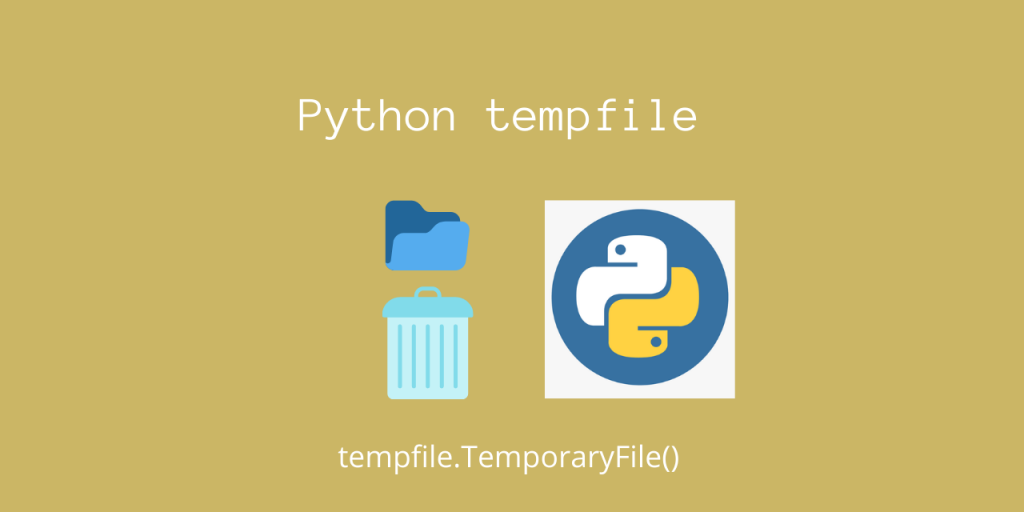In this tutorial, we’ll delve into the powerful Python tempfile module, an essential tool for creating, managing, and working with temporary files and directories in your applications.
This guide covers key module methods, such as TemporaryFile(), TemporaryDirectory(), and NamedTemporaryFile(), and how they enable secure and efficient handling of temporary data in a Python environment.
By understanding the tempfile module’s capabilities, you can harness its potential to enhance your software’s reliability and performance. Let’s get started!
The Python tempfile module lets you create and manage temporary files and directories easily. You can work with methods like TemporaryFile(), TemporaryDirectory(), or NamedTemporaryFile() to create temporary files and directories, which are automatically deleted when closed or when your program finishes.
Understanding the Tempfile Module in Python
This module is a part of the standard library (Python 3.x), so you don’t need to install anything using pip. You can simply import it!
import tempfile
We will look at how we can create temporary files and directories now.
Creating Temporary Files and Directories
The tempfile module gives us the TemporaryFile() method, which will create a temporary file.
Since the file is temporary, other programs cannot access this file directly.
As a general safety measure, Python will automatically delete any temporary files created after it is closed. Even if it remains open, after our program completes, this temporary data will be deleted.
Let’s look at a simple example now.
import tempfile
# Create a temporary file using tempfile.TemporaryFile()
temp = tempfile.TemporaryFile()
# Retrieve the directory where temporary files are stored
temp_dir = tempfile.gettempdir()
print(f"Temporary files are stored at: {temp_dir}")
print(f"Created a tempfile object: {temp}")
print(f"The name of the temp file is: {temp.name}")
# Close and clean up the temporary file automatically
temp.close()
Output
Temporary files are stored at: /tmp
Created a tempfile object: <_io.BufferedRandom name=3>
The name of the temp file is: 3
Let’s now try to find this file, using tempfile.gettempdir() to get the directory where all the temp files are stored.
After running the program, if you go to temp_dir (which is /tmp in my case – Linux), you can see that the newly created file 3 is not there.
ls: cannot access '3': No such file or directory
This proves that Python automatically deletes these temporary files after they are closed.
Now, similar to creating temporary files, we can also create temporary directories using the tempfile.TemporaryDirectory() function.
tempfile.TemporaryDirectory(suffix=None, prefix=None, dir=None)
The directory names are random, so you can specify an optional suffix and/or prefix to identify them as part of your program.
Again, to ensure safe deletion of the directory after the relevant code completes, we can use a context manager to securely wrap this!
import tempfile
with tempfile.TemporaryDirectory() as tmpdir:
# The context manager will automatically delete this directory after this section
print(f"Created a temporary directory: {tmpdir}")
print("The temporary directory is deleted")
Output
Created a temporary directory: /tmp/tmpa3udfwu6
The temporary directory is deleted
Again, to verify this, you can try to go to the relevant directory path, which won’t exist!
Interacting with Temporary Files: Reading and Writing
Similar to reading or writing from a file, we can use the same kind of function calls to do this from a temporary file too!
import tempfile
with tempfile.TemporaryFile() as fp:
name = fp.name
fp.write(b'Hello from AskPython!') # Write a byte string using fp.write()
fp.seek(0) # Go to the start of the file
content = fp.read() # Read the contents using fp.read()
print(f"Content of file {name}: {content}")
print("File is now deleted")
Let’s now look at the output.
Output
Content of file 3: b'Hello from AskPython!'
File is now deleted
Indeed, we were able to easily read and write from/to temporary files too.
Working with Named Temporary Files
In some situations, named temporary files may be useful to make the files visible to other scripts/processes so that they can access it, while it is not yet closed.
The tempfile.NamedTemporaryFile() is useful for this. This has the same syntax as creating a normal temporary file.
import tempfile
# We create a named temporary file using tempfile.NamedTemporaryFile()
temp = tempfile.NamedTemporaryFile(suffix='_temp', prefix='askpython_')
print(f"Created a Named Temporary File {temp.name}")
temp.close()
print("File is deleted")
Output
Created a Named Temporary File /tmp/askpython_r2m23q4x_temp
File is deleted
Here, a named temporary file with a prefix of askpython_ and suffix of _temp is created. Again, it will be deleted automatically after it is closed.
Conclusion
In this guide, we explored the tempfile module in Python, which provides an efficient way to create and manage temporary files and directories. This powerful tool is crucial when handling temporary data in software applications. As a developer, how might you benefit from using temporary files in your projects?
References
- Python Tempfile module Documentation
